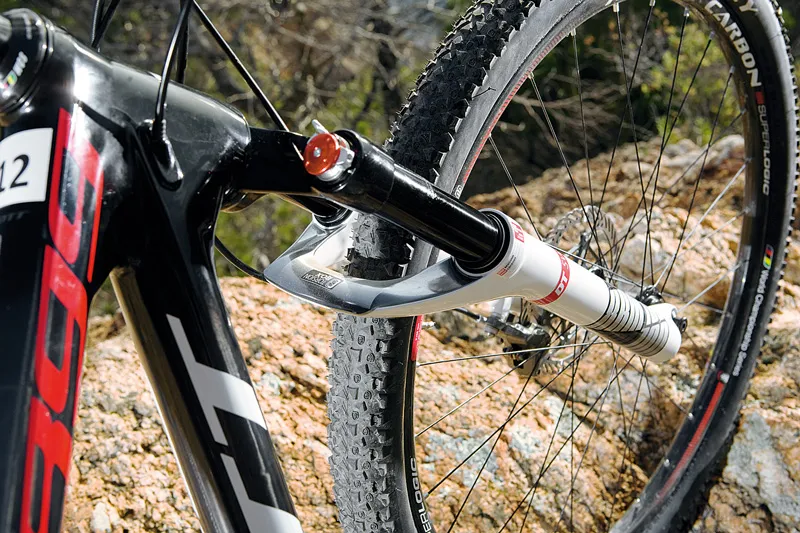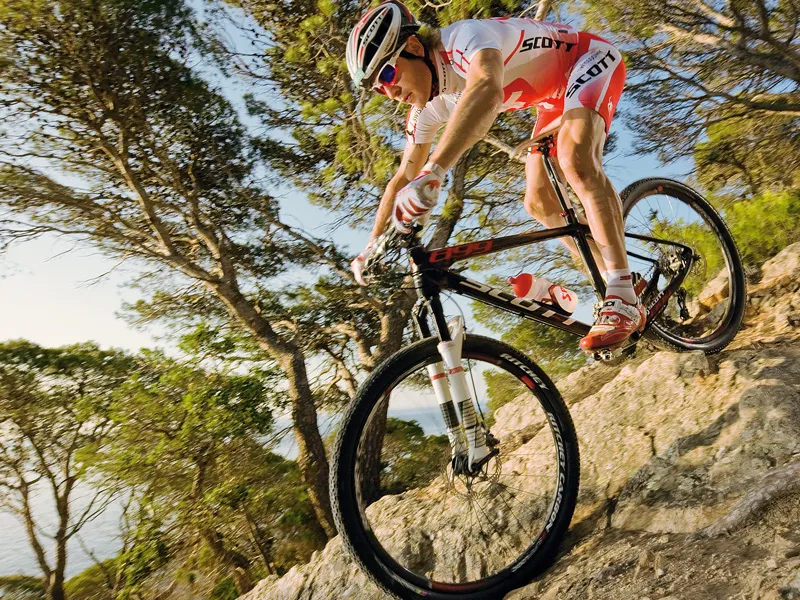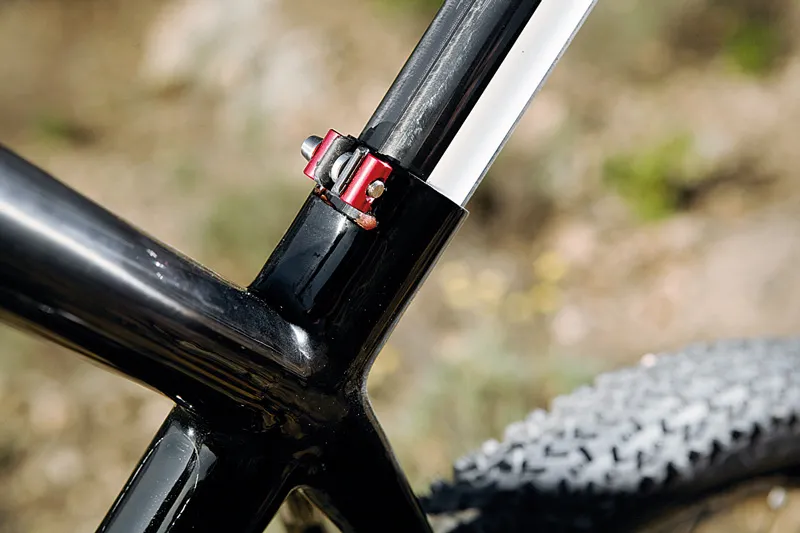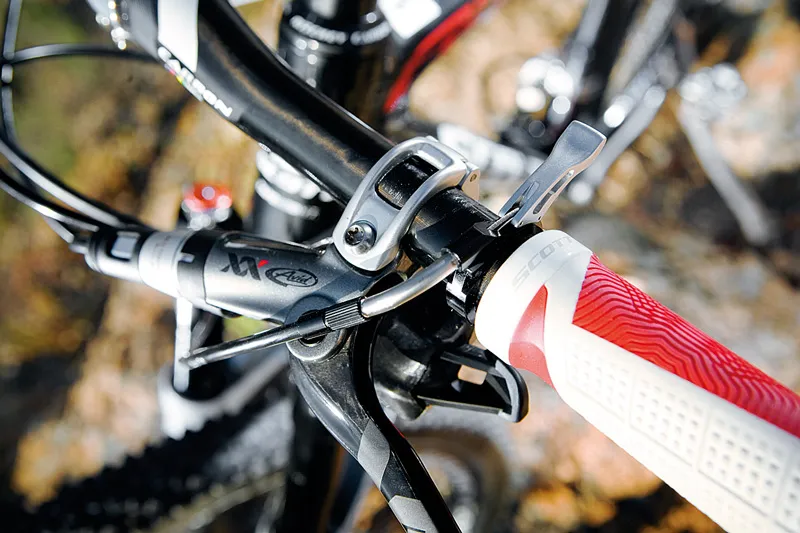The race is on, in more ways than one. Understandably narked at being outdone in the lightest production mountain bike stakes last year by the Merida 0.Nine, long-time featherweight enthusiasts Scott will turn racers’ heads with their new Scale 899.
With a guaranteed frame weight of just 899g (for small and medium sizes), the new Scale’s proprietary HMX net carbon frame is beating its nearest established rival by some 31g and the previous Scale by a hefty 100g. Specced with full SRAM XX transmission and brakes, a longer-travel 100mm fork and new geometry to suit, this thoroughbred may prove more than a race-day black beauty.
It'll no doubt grab podium places next year, but while its focus is clearly whippet-like speed, it’s refreshing to see that the designers have also paid attention to the evolving demands of riders and created a bike that boasts a bit more versatility, albeit at a tremendous price.
Ride & handling: Bred purely for the racetrack but still rides like a dream
As soon as we threw a leg over the 899 we found we were impelled to go fast. Put the hammer down and the frame twitches with energy without a murmur of flex. Climbing was a joy, with SRAM’s XX chainrings delivering faultless shifting under power and the new rear triangle delivering ground-hugging compliance.
Rather than skip its way over every bump, the Scale 899 seems to suck up the terrain, helping to retain rear wheel traction – an attribute that reminds us of the legendary GT Zaskar LE’s triple-butted stays of old.
Borrowing technology from their CR1 road frame by way of both ovalising the seatstays and adjusting the carbon direction layup, Scott’s engineers have added a degree of vertical compliance while increasing lateral stiffness, which they claim increases comfort by 30 percent over the old Scale. The result is a rear triangle that is instantly there for you when you put the power on, but glides over climbs almost effortlessly.
Many oh-so-light hardtails are gold on the climbs but can prove skittish on the descents. Not so the Scale 899. From the moment we rolled into the first snaking singletrack descent this bike felt like it was on rails.
The tapered head tube and oversize box section leading the main triangle ooze surefootedness and directional stability, helped by the stiff carbon lower assembly of the fork. The tweaked geometry rewards the 899 with a character that touches on the playful – something you wouldn’t expect from a highly tuned race-ready machine.
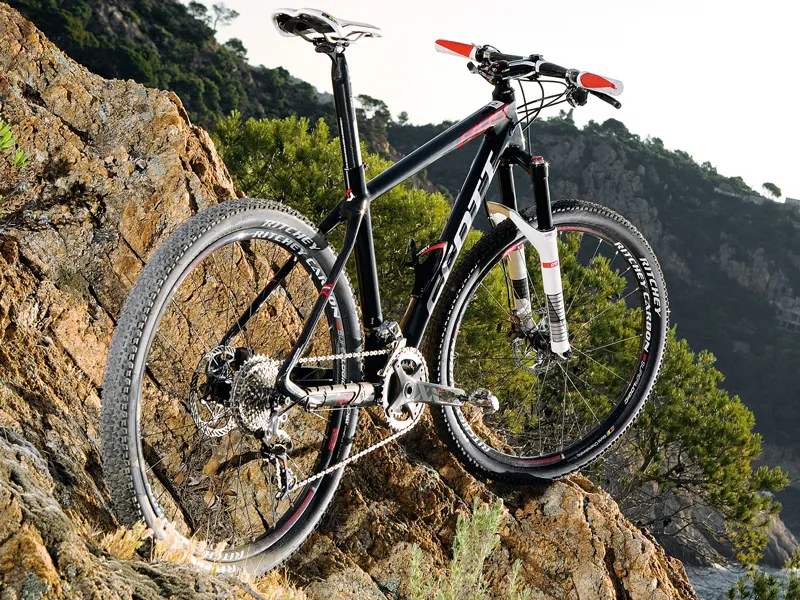
Scott’s one-piece 600mm-wide bar and stem carbon combo felt comfortable and positive, though it does represent a limitation to riders looking to customise the front end with their choice of bars and stems. Meanwhile, the tight, snappy frame offered every change of direction with a burst of energy delivered via short 16.5in chainstays.
In performance terms, Scott have nailed it with the 899 – only the value of such a bank balance-busting bike is in serious question. Yes, it rides great, is the world’s lightest production hardtail, oozes tech advances and is a status symbol to boot, but you pay a hefty premium for the privilege.
Not only is it £1,000 more expensive than the Cannondale Flash Team, which weighs a very close 16.6lb (7.5kg), but the 899’s price exceeds the sum of its parts by around £250. So you could buy the frame only, spec it with full SRAM XX, top-end Scott, Ritchey and DT Swiss parts, and it’ll cost you less than to buy the complete bike. Yes, less.
Scott say this is due to the 899 being lavished with some custom parts and finishing flourishes including a one-off DT Swiss wheelset. Realistically, however, most privateers will plump for a lower priced Scale RC (£4,699) or the frame alone (which is both 31g lighter and £139.03 cheaper than the Merida O.Nine frame).
Frame & equipment: Road-bike-light chassis plus top-end race kit
Scott have gone back to the drawing board to shave weight from their already successful Scale carbon frame. While diminutive frame hardware such as the minimalist new integrated seat collar (weighing a scant 5g), post-mount brake mounts and new carbon dropouts visibly shout weight savings, the new frame has a lot more going on out of sight too.
Large one-piece bottom bracket and head tube boxes replace the previous tube-to-tube bonding, making a lighter and – according to Scott – 10 percent stiffer and stronger frame where it most counts. The aluminium BB insert of old has been ditched and the BB (either standard 92 or BB30) is now press-fit, retained in a plastic sleeve to assist servicing.
With its curving one-piece homogenous seat- and chainstays and seamless front triangle, the 899’s skeleton screams contemporary carbon aesthetics. It’s topped off by a raw matt carbon finish and simple red and white graphics that announce in no uncertain terms the weight of your frame: 899g.
Scott wisely listened to their team riders and added 20mm of travel up front by speccing a new DT XCR 100mm fork – the production bike also gets a carbon steerer and carbon lowers. The bike’s geometry has been tweaked to match the longer travel, with a shorter 90mm stem, 10mm longer top tube, 10mm lower BB and a one degree slacker 70-degree head angle.
All this helps to balance the inherent racy feel with more planted handling. Finished off with a splattering of carbon-tinged componentry and 2x10 SRAM drivetrain, we're under no illusions as to the race-winning intentions of this bike.
